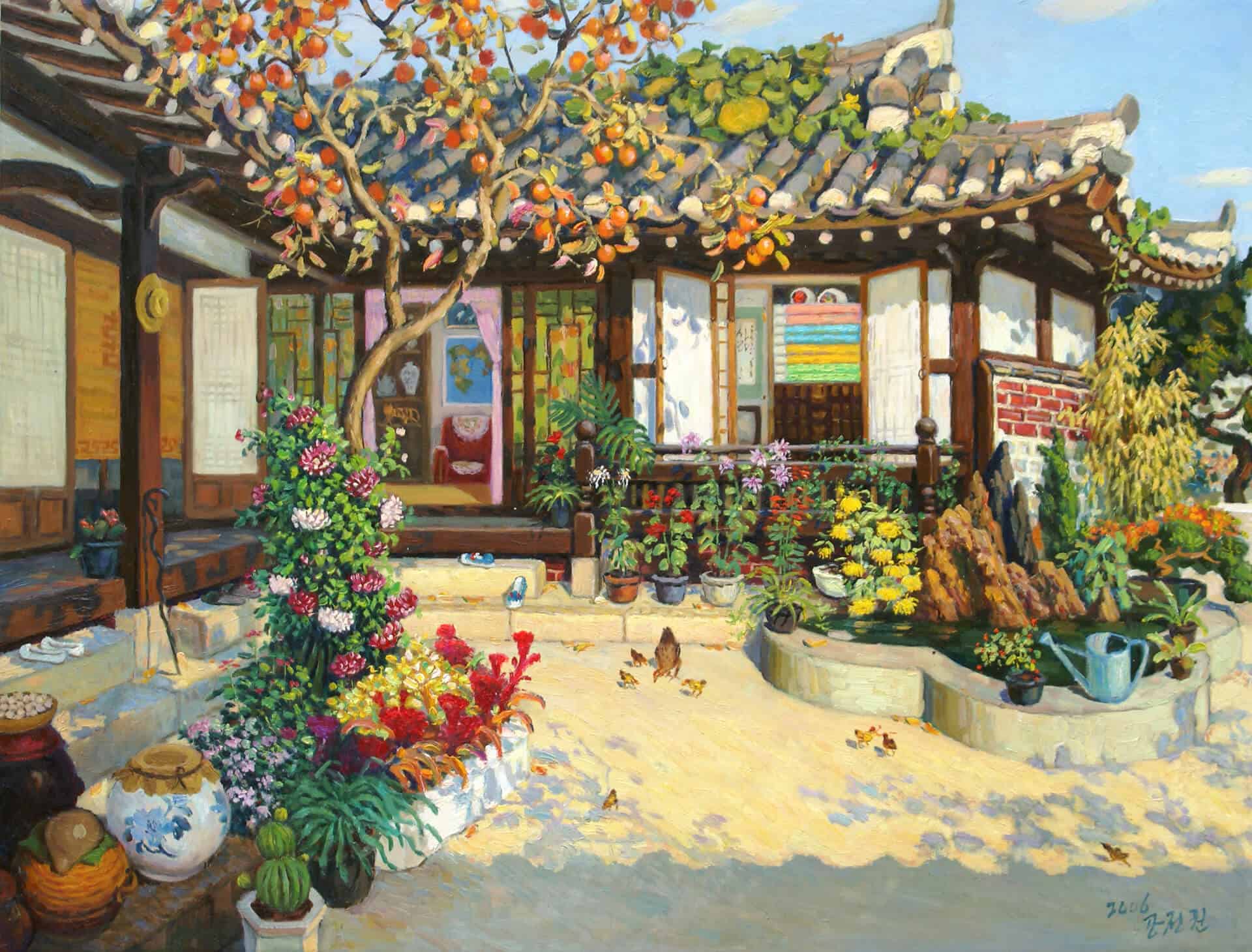Subject matter
One of the most striking differences between Korean and Western painting style is the subject matter. While Western art often depicts historical and religious scenes, portraits, landscapes, and still life, Korean painting focuses on nature and everyday life. Korean painters often depict genre scenes from nature such as mountains, rivers, trees, and flowers, as well as animals and people engaged in everyday activities. The emphasis on nature and everyday life reflects the Confucian ideals of humility, simplicity, and harmony with nature.
Technique
Korean painting is known for its meticulous and detailed brushwork. Korean painters use a variety of brush strokes and techniques to create a sense of depth and texture in their paintings. They also use a limited colour palette, consisting mainly of black, white, and earth tones. In contrast, Western painting often emphasizes the use of colour and light to create a sense of realism and depth.
Composition
Another difference between Korean and Western painting is the composition. Korean painters often use a vertical format, with the subject matter arranged in a vertical column. They also use a two-dimensional perspective, which emphasizes the flatness of the surface. In contrast, Western artists often uses a horizontal format, with the subject matter arranged in a horizontal line. Western painters also use a three-dimensional perspective, which creates the illusion of depth and space.
Symbolism
Symbolism is an important aspect of Korean painting and Korean art. Korean painters often use symbols and motifs to convey meaning and express their ideas. For example, the tiger is a common motif in Korean painting, representing courage, strength, and power. Birds, flowers, and trees are also common symbols in Korean painting, representing beauty, vitality, and longevity. In contrast, Western painting often uses symbolism to represent religious and historical themes.
While there are some similarities between Korean and Western painting, such as the use of brushes and pigments, there are also significant differences in subject matter, technique, composition, and symbolism. Korean painting reflects the country’s unique culture and history, and offers a different perspective on the world than Western painting.
The Kaesong Collection
The majority of today’s Korean artists still follow the path of tradition. The Kaesong Collection unfolds a stylistic and genre panorama of Korean contemporary art and brings out two aspects in the development of Korean painting. One is associated with long art traditions of North Korea, the Far East countries and their art heritage. The other, more modernist trends in the arena of world art. You will find an impression of the art works here. https://www.kaesongcollection.com/collections/collection/
